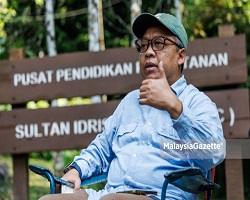Forest soils have been addressed to play a vital role in storing and sequestering carbon. Land-use conversion to agricultural systems can affect soil carbon storage in terrestrial ecosystems by altering the biotic or abiotic processes involved in carbon cycling. In particular, agricultural soils are considered sources of greenhouse gases, and their proper management can result in the soil serving as a sink of carbon dioxide (CO2) (Pautian et al., 2016). This fact receives mixed acceptance as contradicting findings by different researchers (Alaswad et al., 2017, Khasanah et al., 2017). The conversion of secondary forests to oil palm plantations increased soil organic carbon stocks (SOCs) and soil organic nitrogen (SON) content over time, as indicated by the SOC and carbon stable isotope (δ13C) results (Alaswad et al., 2017).
With the increasing rate of lowland forest conversion into plantations of rubber (Havea brasiliensis) and oil palm (Elaeis guineesis), and pasture (Panicum maximum) in Malaysia and other tropical countries, it is important to know the land use conversion affecting the distribution and dynamics of soil carbon, as well as the soil carbon source at the different vegetated land corps coverage. This article discusses whether soil can be considered a sink or source of carbon (C) and does soil management contributes to climate change.
The work by Alaswad et al. (2018) evaluates the effect of land conversion from secondary forest to rubber and from rubber to oil palm plantations aged 15 years and 5 years and pasture. The SOCs of other land usage have higher than secondary forests as the topsoil of the pasture contains higher SOCs (68.08 t/ha) followed by the oil palm plantation aged 15 years (59.15 t/ha), secondary forest (51.68 t/ha), while the equal low value for oil palm plantations age 5 years and rubber (48.10 t/ha and 47.79 t/ha). The potential reason for the low SOCs in the secondary forest was reportedly due to the lack of significant soil organic matter (SOM) content compared to the pasture due to dense grass coverage leading to higher input of fibrous dead leaves and roots and vegetation transition during conversion of the rubber to grassland. Meanwhile, higher SOCs in oil palm plantation was due to high organic matter (OM) produced from plant management such as routine frond branches cut and weeding.
The author also found that in a much deeper layer of the soil profile (60-90 cm depth), no significantly different values of the SOCs in samples from all studied areas despite a significant SOCs reduction between the soil depth. This indicates that the accumulated SOC is derived from the secondary forest as the original vegetation of these areas. This was further confirmed by the similar value of δ13C at the 60-90 cm soil depth. Generally, the SOCs in the topsoil reflect the current land usage, and the deeper the soil profile, the older the stored SOCs content.
The soil particle sizes contribute to the variation of SOCs in the topsoil. Silt and clay particles have higher carbon and nitrogen concentrations than sand particles. The C adsorption capacity of clay fraction is not maximized leading to a higher potential of absorption of added OM, therefore higher SOC and N stocks. Nevertheless, the micro and macro-organisms’ role accelerates organo-clay interaction in the topsoil. The organism activity was limited in much deeper soil profile due to the soil compaction, reduced space, oxygen, water, and pH. Despite the findings in Alaswad et al. (2018) land use changes did affect the distribution and deposition of C by increasing the C content in the soil referring to the SOCs content and the δ13C value between different land usage and the soil depth, this should not drive to a narrow conclusion. Other considerations should be given to continue maintaining the integrity of forest ecosystems and ensuring sustainable forest management practices, we can promote carbon accumulation in forest soils.
References
Alaswad, F., Mohamat-Yusuff, F., Ismail, R., Kusin, F. M., Hanan, Z., & Khairiah, J. (2017). Spatial distribution of carbon and nitrogen stable isotope in soil of an oil palm plantation. Advances in Environmental Biology, 11(1), 16-26.
Alaswad, F., Mohamat-Yusuff, F., Khairiah, J., Kusin, F. M., Ismail, R., & Asha-Ari, Z. H. (2018). Effects of depth and land cover on soil properties as indicated by carbon and nitrogen-stable isotope analysis. Pol. J. Environ. Stud, 27, 1-10.
Khasanah, N., van Noordwijk, M., Ningsih, H., & Rahayu, S. (2016). Carbon neutral? No change in mineral soil carbon stock under oil palm plantations derived from forest or non-forest in Indonesia. Agric. Ecosyst. Environ.(2015). http://dx. doi. org/10.1015/j. agee. 2015.06. 0009.
Paustian, K., Lehmann, J., Ogle, S., Reay, D., Robertson, G. P., & Smith, P. (2016). Climate-smart soils. Nature, 532(7597), 49-57.
Tarikh Input: 12/07/2023 | Kemaskini: 12/07/2023 | masridien
PERKONGSIAN MEDIA




























